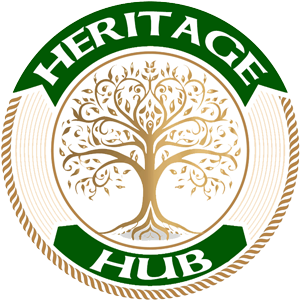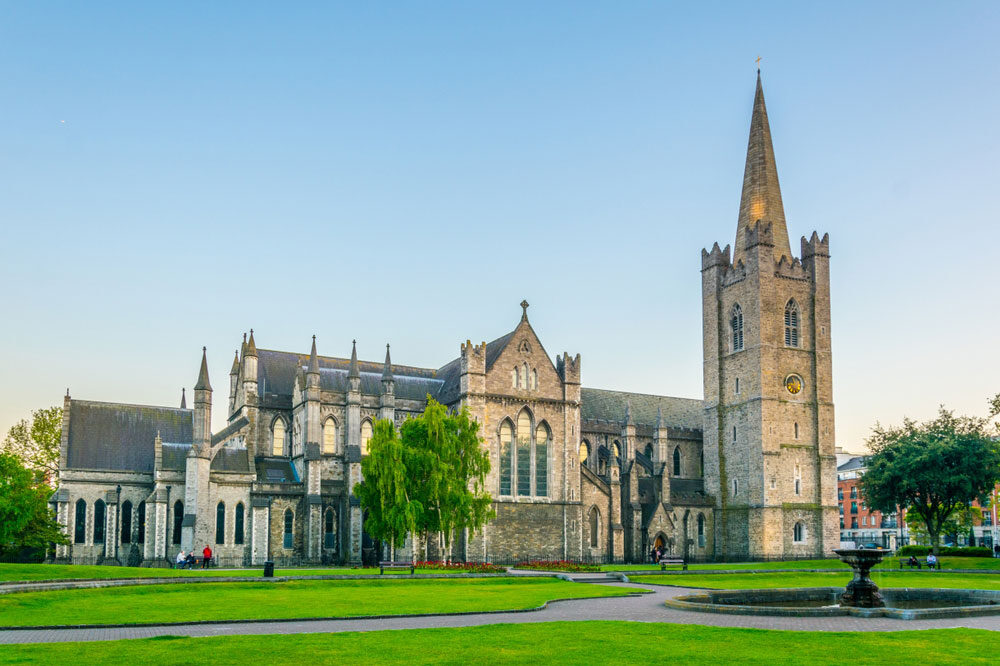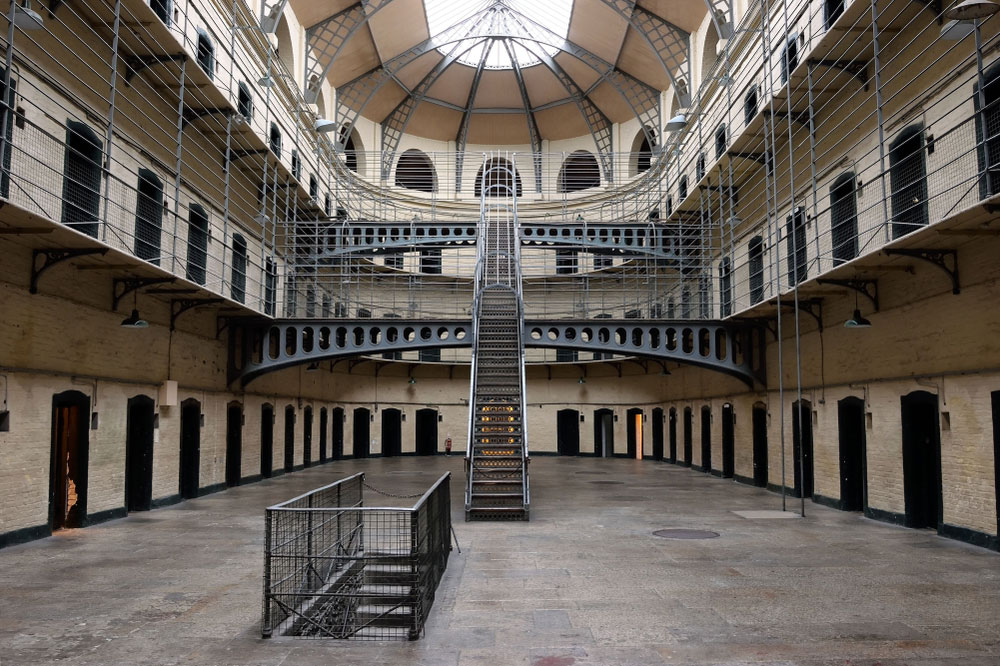The Viking Beginnings
Dublin Castle, a landmark steeped in Irish history, traces its origins back over a thousand years. Its journey from a Viking settlement to the seat of British and later Irish rule reflects Ireland’s complex history of conquest, resistance, and resilience.
Viking Settlement in Dublin
Dublin’s history with the Vikings dates back to the early 9th century. As Norse raiders turned settlers, they established longphorts maritime fortifications along Ireland’s coastlines. Dublin’s strategic location at the mouth of the River Liffey made it an ideal site for these Norse settlers, who used the location to defend themselves and expand their trading routes. By the 10th century, the Norse had made Dublin one of the most important Viking trading hubs in Europe.
The Early Fortifications
The original “castle” on the site was not the structure we recognize today. Instead, it was a fortified Norse settlement consisting of earthen walls and wooden palisades, built to protect the Vikings and their growing wealth. These defenses also helped them secure their power in the region, maintaining their dominance until the arrival of Anglo-Norman forces in the late 12th century.
Viking Influence on Dublin
The Vikings left a lasting cultural and architectural imprint on Dublin. Not only did they contribute to Dublin’s early growth as a trading center, but their influence also shaped the city’s infrastructure. Many of Dublin’s oldest streets – Fishamble Street and Winetavern Street, for instance – have Viking origins, reflecting the town’s medieval Norse layout and commerce-focused planning.
Legacy of the Viking Fort
Although no physical remains of the Viking fort survive, their legacy endures in the stories, artifacts, and even the names that reflect Dublin’s Norse roots. The foundation they laid would eventually evolve into Dublin Castle, as the Anglo-Normans built over and transformed this once-Viking site into their stronghold.
The Anglo-Norman Castle
After centuries of Viking rule, Dublin was transformed with the arrival of Anglo-Normans in the 12th century. Under King Henry II, England sought to assert control over Ireland, establishing new structures of power. The Viking longphort in Dublin was about to undergo a dramatic transformation, becoming a fortified castle that symbolized the shift in power and foreshadowed centuries of British rule.
The Establishment of Dublin Castle
In 1204, King John of England ordered the construction of a fortified castle in Dublin to secure English power. The castle’s design reflected the standard Norman defensive layout, featuring a central courtyard (or ward) surrounded by thick stone walls, reinforced by four massive corner towers. One of these original towers, the Record Tower, still stands today as one of the oldest parts of the castle.
Strategic Importance
Dublin Castle’s location was strategic, set at the confluence of the River Liffey and the Poddle, a smaller river whose waters helped form a natural moat around the castle. The castle was not only a defensive structure but also served as a residence for English officials and a treasury to hold the state’s riches. Over time, it became the center of administration for the English Crown in Ireland.
Architectural Elements
The Norman castle reflected the architecture of the time, built to withstand both human threats and the elements. The thick stone walls and narrow arrow slits provided security and a clear line of sight for defenders, while the inner courtyard facilitated daily operations and housed various buildings for administration and storage. With its imposing size and fortified walls, the castle was a visible reminder of English rule.
Role as a Symbol of Authority
More than just a military stronghold, Dublin Castle represented England’s authority in Ireland. For the Irish people, the castle became a symbol of foreign dominance, as English rule grew and extended across the country. Dublin Castle’s presence in the city, with its forbidding architecture and foreign rulers, left a lasting impression on the people of Dublin and Ireland as a whole.
Transition to a State Center
The Anglo-Norman period established Dublin Castle as the center of English governance in Ireland. The castle would continue to evolve, adapting to the needs of each new era while preserving its role as a seat of power.
The Tudor and Stuart Influence
The Tudor and Stuart periods marked significant changes for Dublin Castle. As the English monarchy tightened its grip on Ireland, the castle evolved from a medieval fortress into a grand administrative center, reflecting the shifting priorities and growing power of the Crown. During this time, the castle became more than a defensive stronghold; it was transformed into a center of political power, culture, and governance that further solidified English influence over Ireland.
The Tudor Transformation
The 16th century brought with it the rise of the Tudors, whose ambitions included not only consolidating power within England but also bringing Ireland under firm English control. Henry VIII’s break with the Catholic Church and establishment of the Church of England made the Crown wary of Irish allegiance to the Papacy. This religious divide heightened tensions and made Dublin Castle a focal point of English authority in Ireland.
During Henry’s reign, the castle’s role evolved, shifting from a purely defensive fortress to a center for government and administration. The interior of the castle began to reflect its new role, with expanded chambers, formal halls, and spaces to conduct state business. However, the castle was also reinforced to withstand possible Irish uprisings, underscoring its dual role as both a palace and a fortress.
The Role of the Castle in the Reformation
With the Reformation, Dublin Castle became a site of religious as well as political control. English officials used the castle as a base to enforce Protestant rule in a predominantly Catholic Ireland. This period saw rising tensions and conflict between the Irish people and the Crown, with the castle frequently besieged or threatened by Irish forces resisting English-imposed religious reforms.
To further consolidate control, Elizabeth I ordered the construction of additional fortifications around Dublin Castle, reinforcing it as both a symbol and stronghold of English authority. She appointed English governors, or Lords Deputy, who governed Ireland from the castle. These deputies wielded significant power and were responsible for enforcing English policies and religious practices, further alienating the Irish populace.
The Stuart Influence and Dublin Castle’s Expansion
The Stuart dynasty continued to view Dublin Castle as essential to their hold on Ireland. Under James I and Charles I, efforts were made to expand and renovate parts of the castle to serve the needs of an increasingly centralized government. New administrative offices, law courts, and additional residential quarters were added. During this period, the castle became known not just for its military presence but as a place where Irish leaders and English officials convened.
However, the English Civil War and the subsequent Cromwellian conquest of Ireland brought turmoil. Dublin Castle saw many changes in leadership and use during this time, serving at various points as a military headquarters and a symbol of the Commonwealth’s authority under Oliver Cromwell.
Shifting Toward a State Complex
By the late 17th century, Dublin Castle had grown beyond a military stronghold. It was now firmly established as the center of British administration in Ireland. Its fortified walls were gradually replaced with more elegant architecture, reflecting its transformation into a stately complex that housed courts, administrative offices, and the official residence of the Lord Lieutenant, the British monarch’s representative in Ireland.

The Georgian Influence
The Georgian era, spanning much of the 18th and early 19th centuries, transformed Dublin Castle from a functional stronghold into a refined state complex, emblematic of British rule in Ireland. During this period, the castle’s architecture and purpose were reimagined to reflect a more ceremonial role, hosting grand state functions and symbolizing the monarchy’s prestige and authority in Ireland. This era would shape much of the castle’s appearance and significance as seen today.
The Vision of the Georgian Period
The Georgian influence on Dublin Castle was led by successive Lord Lieutenants of Ireland, representatives of the British monarch who resided in the castle and oversaw its operations. With Ireland’s relative stability and the growing prosperity of Dublin in the 18th century, there was a desire to give the castle an air of elegance and refinement that would reflect well on the Crown. The Georgian period’s classical architectural style, with its emphasis on symmetry, proportion, and decorative detail, provided the perfect aesthetic for this transformation.
Architectural Transformation
One of the most significant additions during the Georgian period was the construction of the State Apartments, a series of grand rooms designed for hosting royal receptions, banquets, and ceremonies. These rooms, lavishly decorated with gilded ceilings, ornate fireplaces, and crystal chandeliers, provided an impressive setting for important gatherings and diplomatic events. The Throne Room, for instance, was designed specifically to accommodate visits from the British monarchy, complete with a magnificent gilded throne for the King or Queen.
The Bedford Tower, completed in 1750, became an iconic feature of the Georgian transformation. It was constructed in the classical Palladian style, featuring a distinctive copper dome and columns that represented both strength and elegance. It soon became the focal point of the castle’s Upper Yard and housed the jewels of the Order of St. Patrick, a chivalric order established by George III.
The Castle as a Social Hub
As Dublin grew into one of the British Empire’s most prominent cities, Dublin Castle emerged as a social and cultural center, hosting lavish balls, concerts, and gatherings for the city’s elite. The castle’s ballroom, which could host hundreds of guests, became the scene of opulent celebrations, marking everything from royal birthdays to the arrival of new Lord Lieutenants. High society events held at the castle played a significant role in reinforcing British prestige and consolidating the monarchy’s influence in Ireland.
These events were also carefully choreographed displays of power and influence, with the British elite in Ireland using the castle’s setting to cultivate a refined image. For many Irish citizens, these displays highlighted the stark divide between the British ruling class and the local population, emphasizing the colonial nature of British governance.
Symbols of British Authority
Dublin Castle’s new role as a center of state functions and social events further cemented its place as a symbol of British rule. The castle became the venue for official ceremonies, military parades, and public addresses by British officials. Every aspect of its redesign – from the neoclassical architecture to the opulent interior – was meant to underscore British authority and sophistication, reinforcing the castle’s image as the heart of British power in Ireland.
A Center for Administration
In addition to its ceremonial role, Dublin Castle retained its importance as an administrative hub. The Office of the Chief Secretary for Ireland was based in the castle, as well as various government departments. For most of the Georgian period, decisions that would impact Irish governance and life were made within its walls, further entwining the castle with British colonial rule.
The Role of Dublin Castle in Modern Ireland
As the 20th century began, Dublin Castle remained a prominent symbol of British authority in Ireland. However, Ireland was on the brink of monumental change. The years leading up to and following the Irish War of Independence (1919–1921) saw Dublin Castle transition from a seat of colonial power to a cherished national landmark, representing Ireland’s struggle for sovereignty and its independent identity.
The Castle and the Fight for Independence
During the early 20th century, Dublin Castle became a target for Irish revolutionaries, who viewed it as a center of British oppression. The castle housed British intelligence operations and was the headquarters of the Dublin Metropolitan Police. Throughout the Irish War of Independence, Irish Republican Army (IRA) operatives staged attacks on the castle, and it became a place of intrigue, surveillance, and conflict as British forces attempted to suppress the growing independence movement.
In 1921, the Anglo-Irish Treaty was signed, which paved the way for the establishment of the Irish Free State. On January 16, 1922, British forces formally handed over Dublin Castle to representatives of the new Irish government. This historic handover, marked by solemnity and ceremony, represented the end of British rule in Ireland. For the first time in centuries, Dublin Castle was under Irish control.
A New Purpose in an Independent Ireland
With the departure of British forces, Dublin Castle was repurposed to serve as a center for the Irish government. While its symbolic significance was undeniable, the castle’s practical uses also continued, housing government offices and hosting official events. Over time, it became a venue for inaugurating Irish presidents, cementing its role in the new state’s political life.
The castle’s role as a national landmark grew as it became a symbol of the country’s independence. Rooms like St. Patrick’s Hall, which had once hosted British officials and high-society events, now served as venues for state ceremonies, official receptions, and national celebrations, all honoring Ireland’s own history and achievements.
Preservation and Restoration
Throughout the 20th century, Dublin Castle underwent extensive preservation efforts. The Irish government worked to restore parts of the castle to its former grandeur, while also opening it up to the public as a historical site. Archaeological excavations uncovered remnants of the original Viking fort, connecting the castle’s foundations to its ancient roots and allowing visitors to experience its deep history firsthand.
The Office of Public Works led several initiatives to restore and maintain the castle’s historic architecture, including the Georgian-era State Apartments and medieval structures. Today, Dublin Castle is one of Ireland’s most important heritage sites, attracting visitors from around the world to explore its centuries-old legacy.
Dublin Castle Today: A Symbol of Heritage and Unity
Today, Dublin Castle is a living symbol of Ireland’s rich history and resilience. It serves not only as a historic site but also as a center for art exhibitions, public events, and government functions. The castle’s State Apartments continue to host official ceremonies, such as the inauguration of Irish presidents, while its public spaces showcase Ireland’s artistic and cultural heritage.
The castle has come to represent Ireland’s journey from colonization to independence and its emergence as a modern nation. With its layers of history – from Viking fort to Anglo-Norman stronghold, Georgian state center, and now an Irish national treasure – Dublin Castle embodies the resilience and cultural richness of Ireland itself.
A National Treasure
Dublin Castle’s journey through the ages reflects the spirit of Ireland, and its story is a testament to the country’s ability to preserve its past while embracing its future. Once a symbol of foreign power, the castle now stands as a monument to Irish sovereignty, cultural pride, and historical depth, welcoming all who wish to connect with Ireland’s remarkable past.
Historical and Cultural Sites
- Trinity College and the Book of Kells – Home to Ireland’s greatest cultural treasure and the stunning Long Room Library.
- Dublin Castle – A historic site with a mix of medieval, Georgian, and Viking influences.
- Kilmainham Gaol – A former prison that played a pivotal role in Irish history, now a museum.
- Christ Church Cathedral – A magnificent medieval cathedral with a crypt and stunning architecture.
- St. Patrick’s Cathedral – Ireland’s largest church, associated with the famous saint.
Museums and Galleries
- National Museum of Ireland – Features exhibits on archaeology, natural history, and decorative arts.
- National Gallery of Ireland – Houses an impressive collection of European and Irish art.
- EPIC The Irish Emigration Museum – An interactive museum dedicated to Irish emigration history.
- Dublin Writers Museum – Celebrating Ireland’s literary heritage with exhibits on famous authors.
- Guinness Storehouse – A must-visit for beer enthusiasts, offering a journey through the history of Guinness.
Parks and Outdoor Spaces
- Phoenix Park – One of the largest city parks in Europe, home to Dublin Zoo and Áras an Uachtaráin (President’s residence).
- St. Stephen’s Green – A Victorian park in the heart of Dublin, perfect for a relaxing stroll.
- Iveagh Gardens – Known as Dublin’s “Secret Garden,” featuring waterfalls, grottos, and rose gardens.
- Bull Island – A UNESCO Biosphere Reserve with walking trails and sandy beaches.
- Howth Cliff Walk – A scenic coastal walk with breathtaking views of the Irish Sea.
Entertainment and Nightlife
- Temple Bar – Dublin’s cultural quarter, buzzing with pubs, restaurants, and live music.
- Grafton Street – A bustling shopping area with street performers and cafes.
- 3Arena – A top venue for concerts and live performances.
- The Abbey Theatre – Ireland’s national theatre, showcasing classic and contemporary plays.
- Croke Park Stadium and GAA Museum – Learn about Gaelic games and enjoy panoramic views from the Skyline tour.
Coastal Attractions
- Dún Laoghaire Harbour – A beautiful coastal area with a promenade, piers, and sailing activities.
- Malahide Castle and Gardens – A medieval castle surrounded by lush gardens and walking trails.
- Dalkey Village and Heritage Centre – A charming village with historical sites and scenic views.
- Portmarnock Beach – A sandy beach perfect for walks, kite surfing, and relaxation.
- Howth Harbour and Market – A picturesque fishing village with a weekend market and seafood restaurants.
Unique Experiences
- Dublin Bay Cruises – Explore the coastline with scenic boat tours.
- Viking Splash Tours – A fun and quirky way to see the city by land and water.
- Jameson Distillery Bow St. – Learn about Irish whiskey and enjoy a tasting session.
- National Leprechaun Museum – Dive into Irish folklore and myths in this interactive museum.
- Ha’penny Bridge – An iconic pedestrian bridge over the River Liffey, perfect for photos.
County Dublin offers a rich blend of history, culture, and modern attractions, making it a vibrant destination for all.
Helpful Resources
















